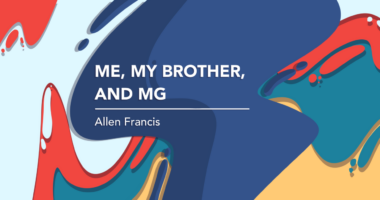IVMP, tacrolimus may help OMG symptoms where oral steroids don’t
No difference between the groups in ocular QMG score changes over 6 months

Both high-dose intravenous methylprednisolone (IVMP) and tacrolimus effectively reduced symptom severity in patients with ocular myasthenia gravis (OMG) who failed to respond to oral steroids, a study shows.
IVMP began to work quickly and more patients on it achieved a clinically meaningful treatment response over six months.
“Both IVMP and tacrolimus monotherapy have great potential to be used to treat OMG patients with unsatisfactory responses to oral prednisone,” the researchers wrote in “Comparative effectiveness and safety of intravenous methylprednisolone and tacrolimus monotherapy in ocular myasthenia gravis with unsatisfactory prednisone responses: a retrospective study,” which was published in the Orphanet Journal of Rare Diseases.
Oral prednisone is a first-line treatment for OMG where symptoms of muscle weakness are largely restricted to eye and eyelid movements.
Using it long term can result in significant side effects and some patients report limited effectiveness. Alternative treatment approaches for OMG patients who don’t respond well to oral prednisone are needed, say researchers.
Like oral prednisone, IVMP is a steroid for MG. It involves a high dose, infused directly into the bloodstream over a few days in the hospital. Thereafter, the dose of oral prednisone can be tapered off.
IVMP, tacrolimus for ocular MG
IVMP has led to rapid and sustained symptom control with generalized myasthenia gravis. It’s not as well studied in OMG, but a report did indicate it resulted in faster reductions in ocular symptoms relative to oral prednisone.
Tacrolimus (sold as Prograf and others) is an immunosuppressant that’s also been beneficial for steroid-resistant MG patients, but its potential as a monotherapy for OMG hasn’t been established, leading scientists in China to describe the findings from a retrospective analysis of 57 OMG patients who received treatment with IVMP (29) or tacrolimus (28) after having an unsatisfactory response to conventional oral prednisone.
IVMP was administered at the hospital for five to 10 consecutive days. It was initiated at a dose of 500 to 1,000 mg and reduced by half every two to three days. After IVMP, the oral prednisone dose was slowly tapered.
Oral tacrolimus was taken at 1 to 3 mg per day after the oral prednisone was discontinued. Some patients received supplemental capsules of the traditional Chinese medicine Wuzhi, which increases tacrolimus concentrations in the bloodstream.
Those receiving IVMP had had OMG significantly longer than those on tacrolimus, a median of 120 months (nearly 11 years) compared with 42 months (3.5 years).
Disease severity was monitored using the ocular Quantitative MG (QMG) scale, where a lower score (0-9) indicates reduced symptom severity. Over six months of treatment, both therapies led to reductions in ocular QMG scores.
Gains with IVMP, then with tacrolimus
The improvements started faster in the IVMP group, where a significantly greater reduction in ocular QMG scores was seen during the first month of treatment over tacrolimus.
The tacrolimus patients did ultimately catch up after the first couple of months, with no overall difference between the two groups in the change of ocular QMG scores over the full six-month follow-up.
A significantly greater proportion of patients in the IVMP group achieved a clinical response, defined as a reduction by at least 2 points on the ocular QMG scale, compared with tacrolimus in the first and third months, but no significant difference remained after six months. After the first month, 51.7% of patients in the IVMP group reached this threshold compared with 12% on tacrolimus. By month six, 69% on IVMP and 46.4% on tacrolimus reached it.
The researchers also looked for clinical differences between the 10 patients who’d already had a treatment response at the time of their hospital discharge after IVMP and the 19 who hadn’t to further examine possible factors associated with the effectiveness of IVMP.
Having a higher ocular QMG score before starting IVMP was associated with a better response to the therapy, final statistical analyses indicated.
No serious side effects occurred in either group and the ones that did happen were temporary and tolerable.
“The study supports the safety and effectiveness of both therapies,” wrote the researchers, who also noted that in the clinic, “the decision to opt for an ocular MG treatment strategy is multifactorial and often individualized based on the clinician’s judgment and the patient’s specific circumstances.” For example, while IVMP may be favorable regarding how quickly it takes effect, it also requires hospitalization. Tacrolimus doesn’t require a hospital admission, but may take longer to kick in.
“Large prospective clinical trials over a longer follow-up period are needed to evaluate the efficacy of IVMP and tacrolimus monotherapy in OMG patients and verify the results of this study,” the researchers wrote.






